- Home
- Jackie French
A Waltz for Matilda Page 39
A Waltz for Matilda Read online
Page 39
Australia was built on idealism — and on self-interest. Men over twenty-one could vote in the first federal election; women couldn’t, although the first parliament voted to give them the vote. Only British citizens could vote, and Aboriginal Australians were not counted as British citizens. South Australia had allowed white women and Aboriginal men to vote, but even they weren’t given the right to vote in a federal parliament. And Aboriginal Australians were not included in the census.
When Australians today talk of our ‘constitutional rights’ they often assume that we have the rights that are enshrined in the American constitution. We don’t. Our only ‘right’ is freedom of religion — and that was really only meant to allow Catholics the same rights as Protestant Christians. It’s likely that if those who drew up our constitution ever suspected that Australia might have a large number of people practising non-Christian religions, they would have excluded them from this constitutional right.
Our nation was created by idealists. But their ideals weren’t all ones that most modern Australians would agree with.
‘BREAKER’ MORANT
James Drinkwater’s fate of course is based on that of Harry ‘Breaker’ Morant, who was tried and shot for killing Boer commandos who might, or might not, have already surrendered, but who had killed and possibly horrendously mutilated his friend. (Morant was accused of other crimes too, but those charges were dropped.) Breaker Morant’s story is fascinating, but too long to go into here; and, apart from his final fate, he and the James in this book had nothing else in common.
Breaker Morant’s story however is important: the Australian government and public were infuriated over the British government’s refusal to officially inform them about the Breaker Morant case; the official records were lost — or possibly deliberately mislaid — and even his next of kin weren’t officially informed of his sentence.
The feeling that justice had not been done to an Australian by a British military court resulted in the ruling that, from then on, all Australian service people would be tried by Australian military tribunals. In World War I many British soldiers were shot for cowardice, when they were simply suffering from shellshock or unbearable horror at what they faced. No Australian in World War I was shot for cowardice and, from then until today, Australian forces remain under direct Australian command, even if general control of the operation is given to an ally.
This led to greater emphasis on ‘Australian units within joint forces’ — and the Anzac legend. It was also the start of a growing feeling that we were Australians, not British. While most Australians fervently supported the ‘Empire’ in World War I, there was still a feeling of distrust — often justified — about the competency of British officers and the feeling that Australian troops might be more ‘dispensable’ than British ones.
THE BOER WAR
The Boer War (1899–1902) was about which of two European countries, England or Holland, was going to control South Africa. Most of the fighting was between the farming descendants of the Dutch settlers — the Boers — and the British army.
The conflict had nothing to do with Australia, but we were part of the British Empire, so Australians flocked to fight. The Boer farmers fought the British army by hiding, ambushing them, then retreating to the country they knew so well.
About 20,000 Australian men served in the Boer War and about eighty Australian women as nurses. It is difficult to know exact numbers as some men enlisted more than once. Other regiments were ‘irregulars’ and their men weren’t counted in official numbers. It was an enormous number, though, for such a small nation. Most families had someone fighting or knew someone who was.
About 600 Australians died and six were awarded the Victoria Cross for their Boer War service.
CONVEYOR BELTS
In this book Tommy invents the conveyor belt before Henry Ford in the United States. In fact many inventions and achievements — like the Wright brothers’ first manned flight — were based on articles by other people or invented several times. At that time a young man like Tommy could have easily created a conveyor belt and later written about it, so that it was adopted elsewhere.
HONEY
As a beekeeper, many years ago, I mostly took honey from our hives in mid to late summer. These were European bees, long-bodied and golden, not the smaller and mostly stingless native bees, which are either almost black or a bright clear blue. (The blue bees don’t form hives and prefer to collect nectar from blue flowers.)
It has been over twenty-five years since I collected ‘sugar bag’, or wild honey, and even then it may have been from wild European bees. There are still purebred native bees in Australia, but in the area where I live there are only native ‘blue bees’ — solitary ones that are not good for sugar bag. Sugar bag is collected just after the local gum-tree flowering. Here this is in August or September, although there isn’t a massive flowering every year, and some years the flowers don’t contain much nectar.
The bees’ behaviour, though, tells you how much honey you can take without danger of taking too much and killing the hive. It would take a whole book to explain this properly, but one way is to see how many young bees there are — they have hairy legs that collect pollen to feed to more young bees. A sudden increase in fluffy-legged bees means that the hive is hatching a lot of young and expecting good honey flow soon. Honey colour varies a lot, depending on what the bees have been feeding on.
NATIVE FRUITS
There are hundreds of good native fruits and vegetables — possibly thousands that I have never heard of. I haven’t given the names of them here because it is very easy to mistake a tasty berry for one that might kill you, though each is based on a native plant that I harvest at the time Matilda gathers them in this book. Some fruits should only be eaten when they are at a particular stage of ripeness or they can be toxic, and others should be tasted first. Bitter or almond-smelling ones should be thrown away as they may be poisonous enough to kill you, while others on a bush nearby that look almost exactly the same may be sweet and can be eaten. Identifying the ‘good’ fruits needs at the very least photos and a map for each fruit, plus a few paragraphs of information. Even better, you need to be shown by someone who knows the land and how its fruits can change from year to year, or decade to decade.
EATING SNAKE, SWAN AND GOANNA
Do not try this.
It’s illegal — all native animals are protected. It may also kill you — both snakes and goannas have poison glands. While it is possible to eat the meat, you have to know exactly what you are doing or you may end up dead. There is also increasingly less land for wildlife, and we need to cherish what we have — even if, like snakes, they can just possibly kill us too.
It is also illegal to eat swan, though early settlers did. I never have, but am told by a friend, who did once eat swan for Christmas dinner more than half a century ago when her bush parents were very poor indeed, that swan meat is very tough, though a large swan can have quite a lot of meat on it.
TURNING INVISIBLE
The techniques that Auntie Love used to leave no tracks and become invisible were shown to me decades ago. They are of course more complex than I’ve written here — it’s much easier to demonstrate in person than write down. I have only tried the invisibility once, to frighten a group of trespassers. It worked so well I scared myself too!
I have never tried it again, partly because it did scare me a little, but also because if it didn’t work I’d look stupid, standing stock-still trying to become a tree. Like everything from making a good cake to the five-times table, I expect turning invisible needs practice.
HOW TO TELL WHEN IT WILL RAIN
The ways of looking at the land to tell if there will be rain, or good grass, or bushfire, are just a few of the many strategies those who live with the land and watch it can use to tell what will happen — anywhere from tomorrow to two or even more years’ time. I only know the signs that the land where I live tells me. These will be different in other
areas. As I have said before, while this is a book about all of Australia, the land in the book is the land where I live. We are a small nation, but a very big country, made up of many regions, each with its own weather, climate and lore.
SHEEP
The methods of treating fly strike and other sheep instructions in this book are those of the 1890s. Do not use them — they can be dangerous for both sheep and humans.
SEEDS IN RAISINS
Old recipes for fruitcakes and puddings tell you to take the seeds out of the raisins. These days most raisins have the seeds removed or they are from newer varieties of fruit that have small seeds. But old raisins had big seeds, almost like apple pips, and if the seeds weren’t taken out you had to spit them out, which was bad manners.
THE WOMEN’S TEMPERANCE AND SUFFRAGE LEAGUE
There was no such league, though there were temperance leagues and women’s suffrage leagues, and very often they would have the same members. For convenience I have joined them in this book.
These days many people drink alcohol without drinking too much or too often. But back in the 1800s drunkenness was not just common but the norm for many men after work. Many, perhaps most, shearers drank their entire pay cheque then moved onto another shed where they would have board and lodging till they could have another ‘bender’. In the days when few women had the chance of a paying job, families suffered extreme hardship and frequent violence from men’s alcoholism.
The Temperance Movement didn’t want people to stop enjoying themselves. They helped women feed and educate their families, fought for the vote for women and for equal rights for Aboriginal Australians. My paternal grandmother, Jean MacPherson French, was a member of one such league, and fought diligently for the right of Aboriginal Australians to vote and to be counted in the census. It was her phrase that I have borrowed, spoken after a visit to an Aboriginal comrade’s home: ‘It was spotlessly clean! Spotless!’ There was no greater compliment my grandmother could pay … except perhaps when she spoke of Aboriginal poet Oodgeroo of the Noonuccal people to say: ‘Australia has finally found its Robbie Burns.’ I wish that she — and the other women who gave me so much — could have read this book.
DYING
Many characters in this book die. This is what happened a hundred years ago — people died more often, and younger, than they do now in Australia. Women and children were especially vulnerable, with no antibiotics, no vaccination for polio, measles, whooping cough, diphtheria and other great killers, and poor medical hygiene in childbirth.
HEY YOU
Hey You would have been part dingo, part cattle dog. The Australian cattle dog (also called the Queensland heeler, or the red or blue heeler) was recognised as a separate breed by 1890. Its ancestors include the dingo, an English herding breed called the Smithfield and the smooth-coated Blue Merle collie.
THE SONG AT MR O’HALLORAN’S FUNERAL
This song, ‘The Song of the Union Man’, comes from Shearers’ Record Newspaper, January 1890, as recorded in Sydney Folklore — Section 2: Labour History.
HENRY LAWSON
Henry Lawson spent little time ‘out bush’, but his poems and stories described the bush as it really was, unlike other romantic stories made up about it. There are many phrases in this book that are used in homage to his work, from Mrs Heenan being ‘past caring’ to ‘Grinder’s Alley’.
THE CHINESE WORDS IN THE TEXT
Matilda would have assumed that there was only one Chinese language. Chinese migrants to Australia in the 1800s came from many areas and used several languages. Two of these are used in this book, assuming that Mr Ah Ching and Mr Doo’s family came from different regions of China.
My grateful thanks to a dear friend, for providing the words in the text that a Chinese man might have used in Australia in the 1890s, and the information about the bow that Matilda makes in chapter one. If I have used them in the wrong context the mistakes are mine, not hers.
Note: These are not as the words would be used or spelled these days, but are from 1890 or even earlier.
Qing An: a suitable greeting from a young girl to an older man
Duo xie: words of thanks
Gai ri zai lai, qing zou hao: ‘Come back some day and take care on your way home, please’
RACISM
Once more, I apologise for the racist terms used and assumptions made by some of the characters in this book. There is no way to show the rural Australia of the 1890s — or the effects of that racism — without them. If anything, I have enormously softened both the racist language and the racist assumptions likely to have been made — much of which I remember from my own childhood, decades later.
Several readers have questioned the phrase ‘just one buck’ used by the Drinkwater boys to describe killing an Aboriginal man. I have heard the word — and ‘doe’ for a woman — used several times, including once by ex-Prime Minister Mr Malcolm Fraser, when he was interviewed about the often deadly racism that horrified him in his youth and helped convince him to work to combat it.
Aboriginal men, women and children were still being hunted out of farming areas in the 1890s, often in retaliation for eating the sheep or cattle that were taking the place of the native animals that had once grazed those same lands. The false accusation that ‘natives’ were cannibals was a common one in the 1890s.
Aboriginal men, such as Peter and Michael Sampson in this book, even had to lie about their heritage to join the army. It wasn’t until 1917, when the army was desperate for men, that Aboriginal Australians were allowed to openly join up.
To say ‘I am proud to be Australian’ in no way describes the depth of love and identification I have for this land. But it is worth remembering that our country united to become one nation partly to keep out those who weren’t white English speakers, and that the religious freedom mentioned in our constitution was meant to ensure that Irish Catholics were free to worship, rather than the many religions of today’s Australia.
Our constitution has changed since Federation — notably in order to give women the vote. Our nation has changed too. But we can still perhaps understand it better if we know where we have come from. The past is not always comfortable, but it is part of who we are.
Publisher’s Note
The song ‘Waltzing Matilda’ arose from a collaboration between A.B. ‘Banjo’ Paterson, who wrote the poem in 1895, and Christina Macpherson, who was responsible for the earliest version of the music.
Over the years, a number of different versions of the song have been sung and recorded. The National Library of Australia refers to three versions, one being Paterson’s and another being the arrangement by Marie Cowan in 1903. We cannot be certain whether Cowan obtained the original version directly from Paterson, or whether she heard it sung and transcribed it.
However she came to write it, it is Cowan’s version that most of us recognise, and which is sometimes referred to as the ‘popular version’.
Readers interested in more information on this most famous of all Australia’s ‘bush poems’ can go to the National Library of Australia website: www.nla.gov.au/epubs/waltzingmatilda
Acknowledgements
A Waltz for Matilda could not have been written without the wisdom of seven generations of women, some only slightly disguised in this book. My great-grandmother Emily Sheldon, great-great-aunt Nin Edwards, grandmothers Thelma Edwards and Jean MacPherson, and mother, Val French, are the women of the Temperance and Suffrage League, who fought — and in my mother’s case still fights — for their ideals. The women of our family tend to be long lived, and pass on their stories — and their passions — to many generations.
Auntie Love is many women, some of whose names I don’t know or don’t have permission to give, but who include Oodgeroo of the Noonuccal people (I knew her as Kath Walker), Maureen Watson and the others who tried to pass on to rootless city kids a sense of land and of belonging, as well as Neeta Davis and Jean Hobbins. Miss Thrush and Gillian Pauli have nothing in comm
on except the dedication and generosity they gave to their students. I suspect that Peg Job and Virginia Hooker — both of whom listen tolerantly to the latest historical obsession for at least an hour more than politeness and friendship require — are somewhere in this book too. The young Matilda owes much to tens of thousands of letters from young people. Young people — like Matilda — often see the world with a clarity that adults are too preoccupied to remember.
A Waltz for Matilda has also been blessed with the ‘two Kates’ — Kate O’Donnell, who began the work on this manuscript, and left for the birth of her bonny boy, Clem, and Kate Burnitt, who took over in a seamless transition, checking and rechecking every phrase, making sure that the vision in my mind’s eye was intelligible for the reader. Liz Kemp brought the brilliance of her insight to the first draft of this book. I am a far better writer for knowing that Liz, with her critic’s eye, will read the manuscript.
This book is also partly the vision of two other exceptional women: HarperCollins associate publisher Lisa Berryman, and friend (and volunteer editorial advisor) Noël Pratt. Lisa is the rock of my professional life; Noël is the rock of friendship, wisdom and generosity. This book owes more to Lisa and Noël than I can express.
About the Author
Jackie French is a full-time writer and wombat negotiator. Jackie writes fiction and non-fiction for all ages, and has columns in the print media. Jackie is regarded as one of Australia’s most popular children’s authors. She writes across all genres — from picture books, humour and history to science fiction.

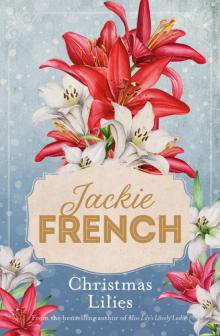 Christmas Lilies
Christmas Lilies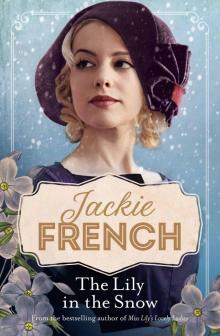 The Lily in the Snow
The Lily in the Snow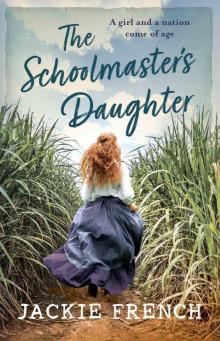 The Schoolmaster's Daughter
The Schoolmaster's Daughter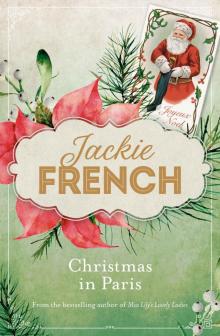 Christmas in Paris
Christmas in Paris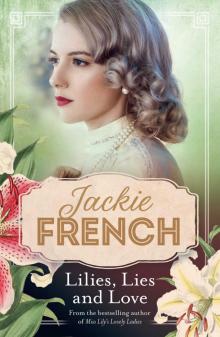 Lilies, Lies and Love
Lilies, Lies and Love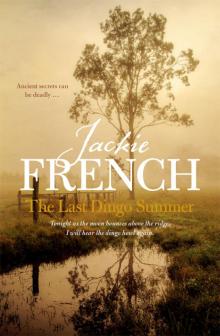 The Last Dingo Summer
The Last Dingo Summer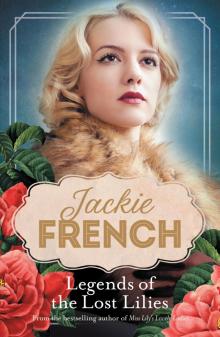 Legends of the Lost Lilies
Legends of the Lost Lilies Just a Girl
Just a Girl Pirate Boy of Sydney Town
Pirate Boy of Sydney Town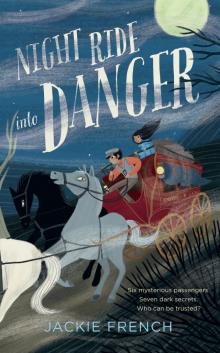 Night Ride into Danger
Night Ride into Danger The Secret of the Youngest Rebel
The Secret of the Youngest Rebel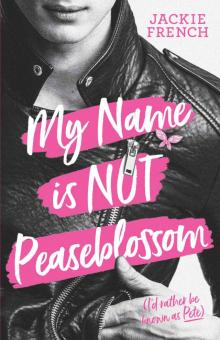 My Name is Not Peaseblossom
My Name is Not Peaseblossom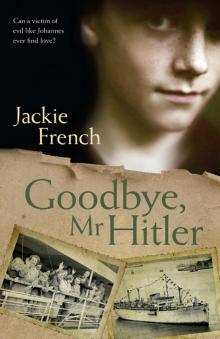 Goodbye, Mr Hitler
Goodbye, Mr Hitler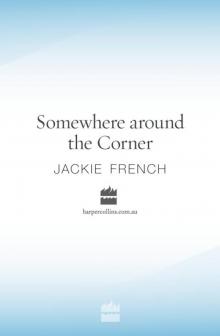 Somewhere around the Corner
Somewhere around the Corner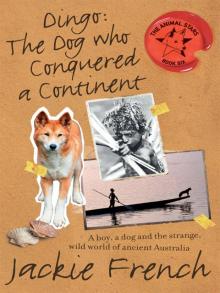 Dingo: The Dog Who Conquered a Continent
Dingo: The Dog Who Conquered a Continent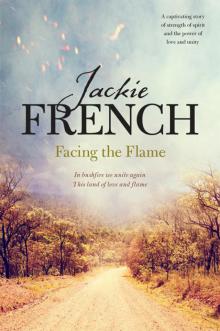 Facing the Flame
Facing the Flame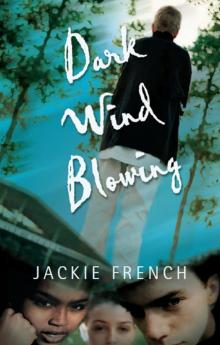 Dark Wind Blowing
Dark Wind Blowing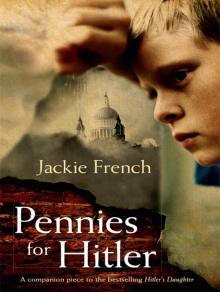 Pennies For Hitler
Pennies For Hitler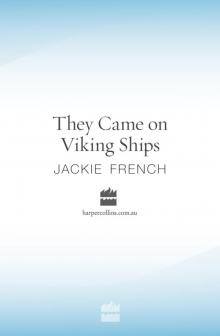 They Came On Viking Ships
They Came On Viking Ships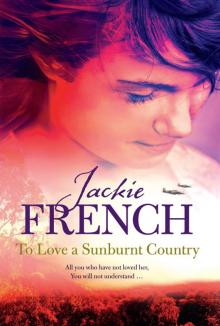 To Love a Sunburnt Country
To Love a Sunburnt Country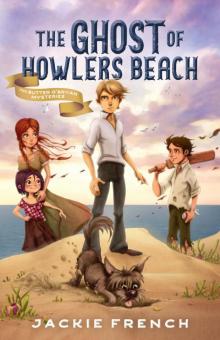 The Ghost of Howlers Beach
The Ghost of Howlers Beach The Girl from Snowy River
The Girl from Snowy River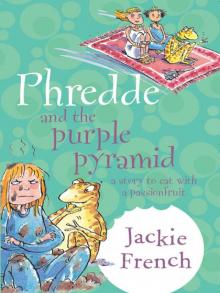 Phredde and the Purple Pyramid
Phredde and the Purple Pyramid The Secret of the Black Bushranger
The Secret of the Black Bushranger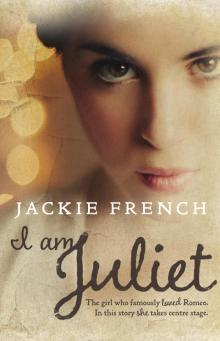 I Am Juliet
I Am Juliet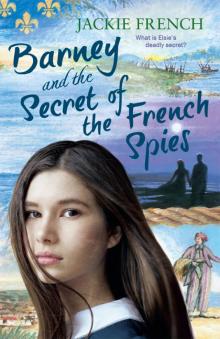 Barney and the Secret of the French Spies
Barney and the Secret of the French Spies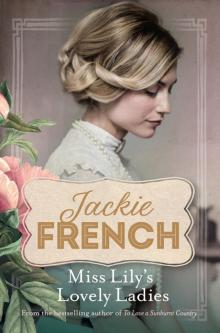 Miss Lily’s Lovely Ladies
Miss Lily’s Lovely Ladies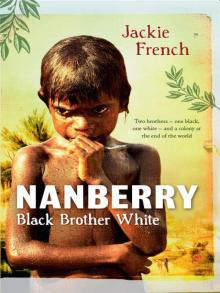 Nanberry
Nanberry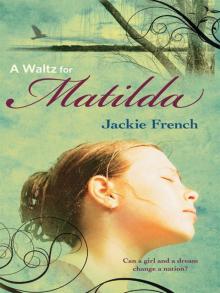 A Waltz for Matilda
A Waltz for Matilda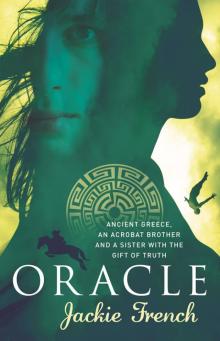 Oracle
Oracle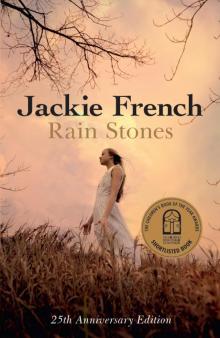 Rain Stones 25th Anniversary Edition
Rain Stones 25th Anniversary Edition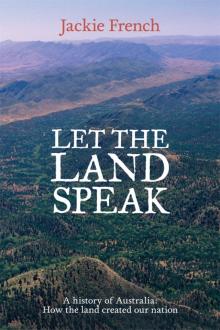 Let the Land Speak
Let the Land Speak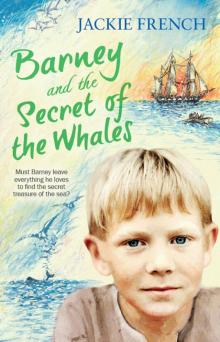 Barney and the Secret of the Whales
Barney and the Secret of the Whales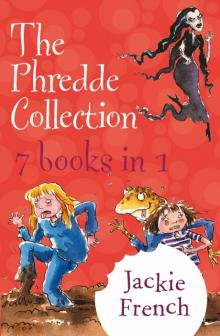 The Phredde Collection
The Phredde Collection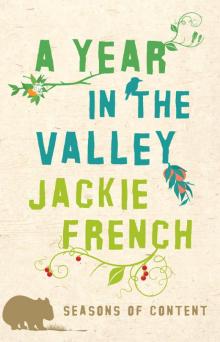 Year in the Valley
Year in the Valley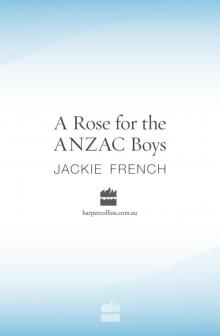 A Rose for the Anzac Boys
A Rose for the Anzac Boys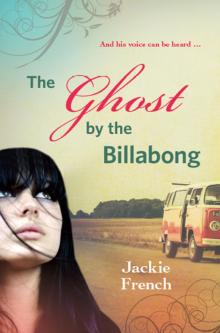 The Ghost by the Billabong
The Ghost by the Billabong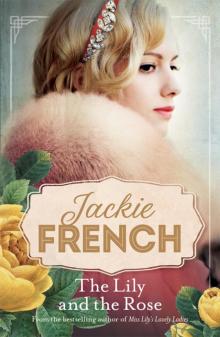 The Lily and the Rose
The Lily and the Rose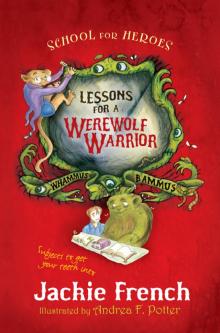 Lessons for a Werewolf Warrior
Lessons for a Werewolf Warrior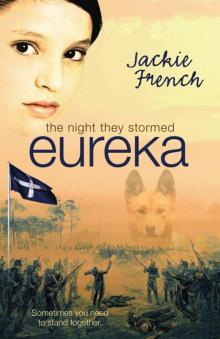 The Night They Stormed Eureka
The Night They Stormed Eureka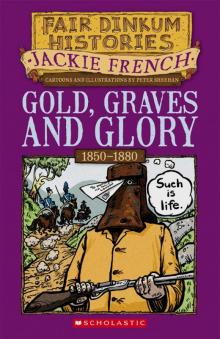 Gold graves and glory
Gold graves and glory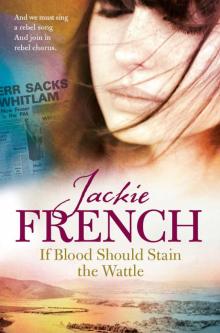 If Blood Should Stain the Wattle
If Blood Should Stain the Wattle The Book of Horses and Unicorns
The Book of Horses and Unicorns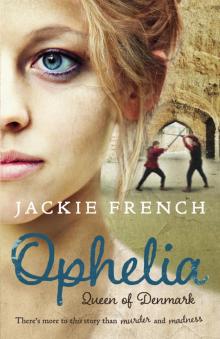 Ophelia
Ophelia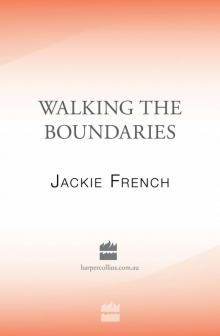 Walking the Boundaries
Walking the Boundaries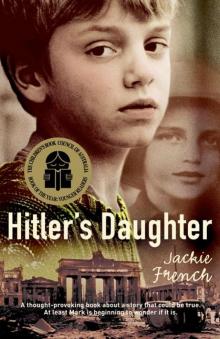 Hitler's Daughter
Hitler's Daughter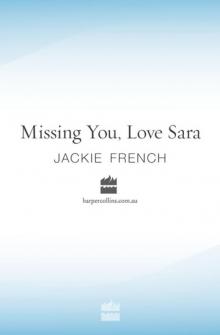 Missing You, Love Sara
Missing You, Love Sara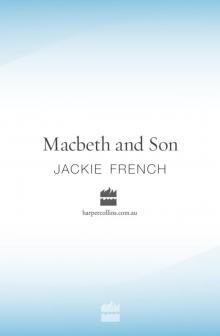 Macbeth and Son
Macbeth and Son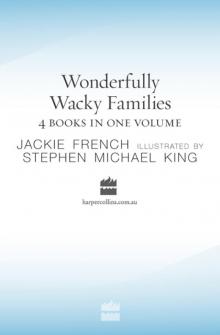 Wonderfully Wacky Families
Wonderfully Wacky Families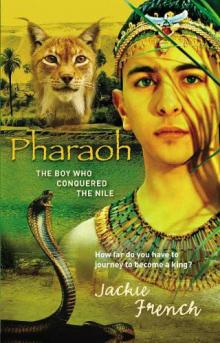 Pharaoh
Pharaoh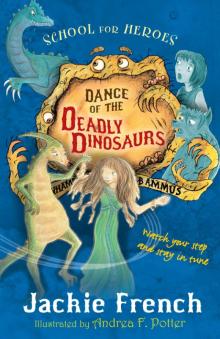 Dance of the Deadly Dinosaurs
Dance of the Deadly Dinosaurs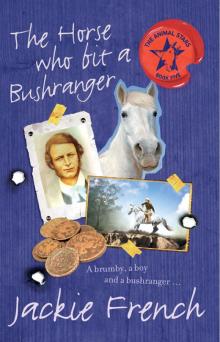 The Horse Who Bit a Bushranger
The Horse Who Bit a Bushranger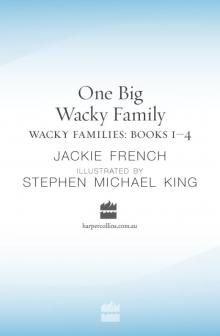 One Big Wacky Family
One Big Wacky Family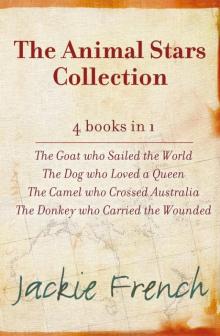 The Animal Stars Collection
The Animal Stars Collection Refuge
Refuge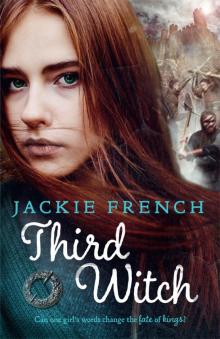 Third Witch
Third Witch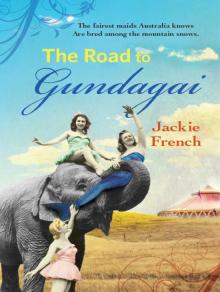 Down the Road to Gundagai
Down the Road to Gundagai